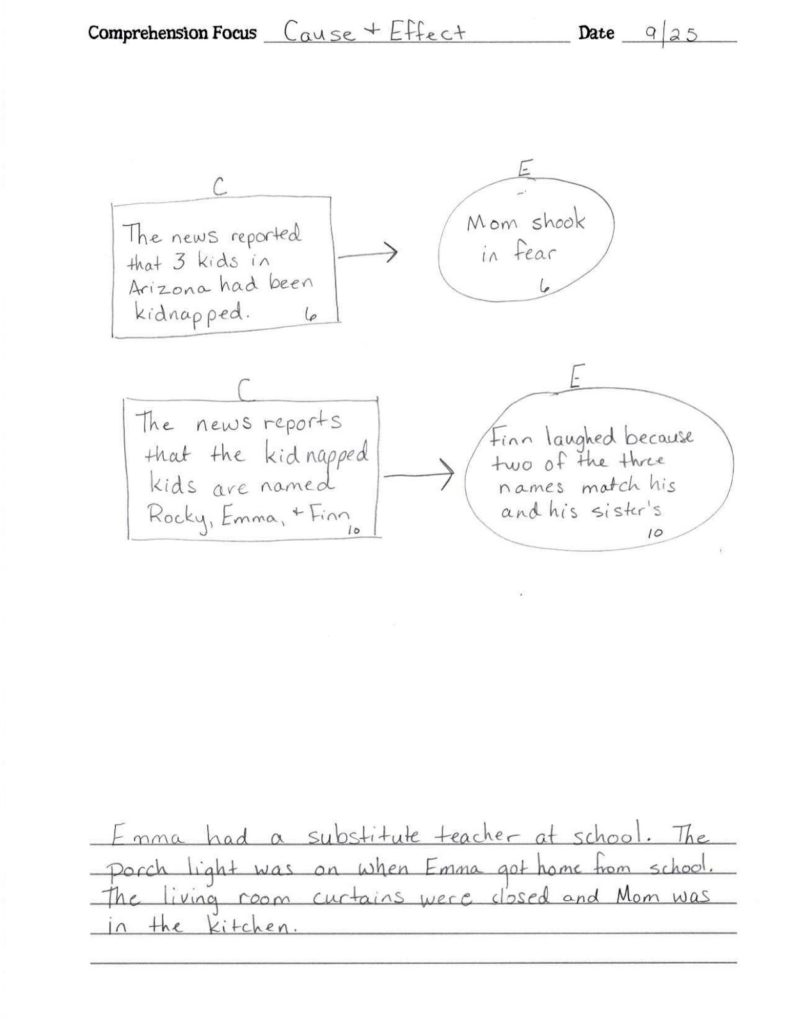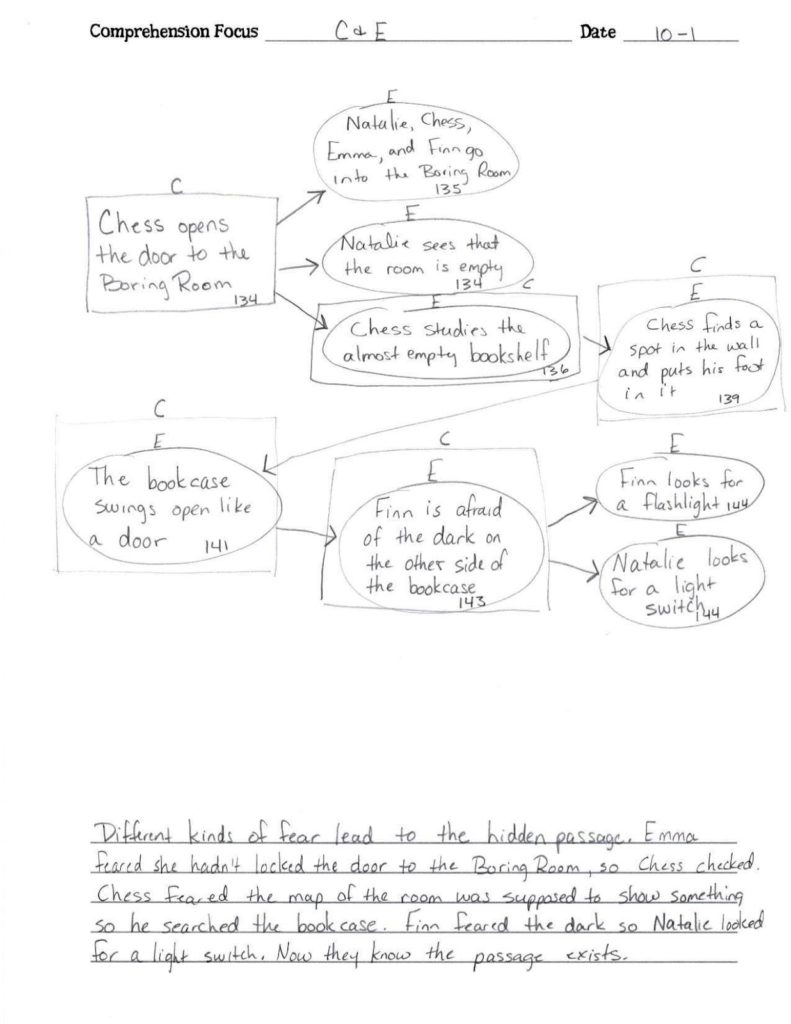Editor’s Note: This article was written by the founder of Clerestory Learning and creator of the Foundations & Frameworks reading program. Clerestory Learning partners with Curriculum Trak to make the companion maps of their courses available for import into your school’s Curriculum Trak account.
“Mr. W., don’t you get it?” The fourth grader’s eyes were wide with excitement. During our discussion of Lois Lowry’s Number the Stars, a novel about a Danish family hiding a Jewish friend during the Nazi invasion, I asked the group what sections of our current chapter stood out as being interesting or important. Maria mentioned a section featuring a few characters traveling by train. In my mind, the passage merely connected more important events, but I had the group find the passage and we read it together anyway. What happened next astonished me, but it illustrates what happens when you teach students to approach their reading thoughtfully.
The deep text understanding Maria was about to demonstrate does not happen by chance. It requires thinking beyond the surface of what happened and when. Finding an author’s intended message is less like stumbling through a darkened room and more like developing a floor plan. It involves making connections, recognizing relationships, and drawing inferences. Deep comprehension—the kind of understanding that enables more than recognition of a text’s basic plot—requires such thinking.
Comprehension & Thinking
Thinking relies on a collection of cognitive skills, processes that can be learned. Having more skills enables thinking about texts from a variety of angles. This is especially valuable when working with challenging texts, such as the Gospel of John or Macbeth. A reader who can think deeply about relationships such as cause and effect, connections such as character values and actions, and implied concepts such as theme will understand a text more fully than one who simply identifies the players and events.
Since thinking is a toolbox of individual skills, it can be taught. But before teaching a skill, the skill itself must be analyzed. What are the steps of thinking that enable an individual to process concepts accurately and efficiently? Defining a term for students is insufficient. To acquire the skill, they need to know its individual steps and understand how to use them together to guide their own thinking.
For example, every instructional reading program addresses the concept of main ideas in nonfiction paragraphs. Many approach this from a define-and-practice strategy. This includes telling the students the definition of main idea (“the most important or central thought of a paragraph”), and then providing paragraphs in which the students should identify main ideas, often through a multiple choice response. What’s missing here is actual skill instruction; the students lack a plan for identifying main ideas.
In contrast, an instructional approach that stresses skill instruction will include the step-by-step process for students. You still start by defining the concept of main idea, but then you present a strategy for identifying main ideas, often as questions students can use to guide their own thinking. For example:
- Who or what is this paragraph about?
- What aspect of the who or what is this paragraph about?
- What does the author want me to know about that aspect of the who or what?
Let’s see how using these process questions helps a student identify a main idea. In reading a text about salamanders, a students may use the process questions to arrive at these answers:
- Who or what is this paragraph about? It is about salamanders.
- What aspect of salamanders is this paragraph about? It is about the skin of salamanders.
- What does the author want me to know about the skin of salamanders? Salamanders have permeable skin that allows moisture to enter their bodies.
If that’s not the main idea, it is likely very close. Over time, this sequence of questions becomes a natural part of a student’s thinking, enabling him/her to identify main ideas quickly without as much of a step-by-step approach, just as a student learning to throw a ball internalizes the steps over time and eventually throws without consciously working through the individual movements.
Every comprehension skill should be taught this way, giving students the actual cognitive steps that enable thinking about a text. And these steps should be developed across grade levels. For example, identifying main ideas should lead to identifying supporting ideas, which should lead to recognizing concept hierarchies within text (e.g., central idea, main ideas, supporting details) as students progress through grade levels.
When I first implemented this approach to teaching comprehension, three interesting things happened. One, students who had struggled with comprehension—sometimes for years—suddenly began contributing to conversations about texts. It was as if scales fell from their eyes and discovering the meanings of texts sparked an eagerness to discuss them. Two, students who had been successful in more traditional approaches began to struggle, temporarily. It was not because their abilities had been negatively influenced; it was because the expectations were suddenly higher, requiring actual work on their part. One-word responses that had been labeled “right” before were now inadequate for the conversations taking place. This second effect corrected itself once these students realized that valuable participation now required effort. Third, the depth of thinking and the quality of discussions skyrocketed. Whereas before we were discussing merely what happened in a text, now we were debating whether Mr. Grimshaw in The Wolves of Willoughby Chase was a potential hero or villain.
And the students began using their thinking skills elsewhere. A sixth grader came in and claimed that the movies had been ruined for him. He explained that while at a superhero movie over the weekend, he could not stop thinking about the theme of the movie and whether or not it would agree with his understanding of truth. He had moved from passively receiving to actively discerning in his interactions with media.
Vision and Thinking
Many trends that flare up in educational discussions are based on questionable research. One of those is the idea that individual students learn best through individual modalities. Joe is a “visual learner,” but Jamel is an “auditory learner,” while Marcus absolutely is a “kinesthetic learner.” While using multiple modalities during learning can help, especially with motivation, the idea that each student fits one of these (or any other) learning categories is doubtful. In fact, when it comes to processing, the brain is heavily oriented toward vision. More than 70% of the brain’s sensory receptors are dedicated to visual processing. Regardless of the notion of “preferred modality,” the brain is primed for visual reasoning.
Visual tools, or graphic organizers, are one way to aid thinking by activating this natural strength of the brain. Visual tools, such as flow charts and Venn diagrams, enable readers to structure the insights they gain through use of comprehension skills. In so doing, students often discover even more connections between text elements, and these links ignite deeper insights about the author’s intended message.
Additionally, visual tools yield the following benefits:
- They promote reflection and engage the cognitive activity necessary for deep text understanding.
- They prolong attention by sparking curiosity and generating challenge.
- They assist working memory in chunking information, enabling better comprehension without overwhelming working memory capacities.
- They increase engagement by involving the students in acts of creation.
- They highlight patterns that promote the construction of deeper understanding.
Having students construct visual tools also provides evidence of student thinking and its development. For example, here is a fifth-grade student’s visual tool and discovery synopsis created near the start of a unit:

Notice that the student is recognizing simple cause and effect relationships, and her summary is matter-of-fact. There are glimpses of potential here. The student has a basic understanding of cause and effect, and recognizes that characters’ reactions can be effects. Here is the same student’s visual tool and summary about a week later:

Note the quality of the response, not just the quantity. First, the student is identifying chains of causes and effect, not just pairings, and is illustrating how an effect can become a cause for a later effect. Second, the student is identifying the desires, thoughts, and beliefs of characters as causes. Third, in her discovery synopsis, the student identifies an interesting insight: fear comes in different forms. That insight may prove helpful as the student contemplates bigger ideas, such as the book’s theme. Imagine how rich the conversation with classmates, who have their own visual tools, will be!
This combination of process questions and visual tools transforms reading into an endless source of discovery. While visiting a classroom recently, I chatted with groups of students working around large sheets of chart paper. They were using their daily work with cause and effect to track relationships through an entire novel. Even though they had finished reading the text, their understanding of it continued to deepen as they discovered cause-effect relationships between text elements separated by chapters. Then, they began identifying every setting change in the novel. Near the end of the period, they were discussing how the changes in settings served as partial causes for some events in the book. When I asked them what they were doing, they not only informed me what but also why they were doing it. They were aware of how continuing to think about a text from different angles significantly improved their understanding of it. (Oh, did I mention these were third graders?)
Collaborative Comprehension & Thinking
Finding deeper meanings in texts provides rich material for discussion and sparks motivation for such conversations. Additionally, talking about a text with others who have also been thinking deeply about it frequently opens up new lines of discovery and additional depths of meaning.
Unfortunately, “small groups” used in reading instruction have earned a poor reputation. However, in reviewing the research, it’s the content of most small group sessions that makes them less effective than they could be. To promote deeper understanding of texts, small group interactions should be viewed as opportunities for collaborative comprehension. In such interactions, the students and the teacher come together with their own thoughts about a text, and use these to engage in focused conversations. Specifically, effective collaborative comprehension sessions (CCS) include four emphases:
- Establishing a basis for thinking. This involves holding students accountable for their own reading and thinking about the text and establishing the factual basis for the day’s conversations. Specifically, it establishes what happened in the assigned section of text.
- Sharing discoveries from personal reflection. This involves exploring what the students found as they worked with the specific comprehension skill being developed. For example, in the student examples of visual tool and discovery synopsis discussed previously, this portion of the CCS would focus on cause and effect: What did the students discover about the text through their work with cause and effect?
- Pursuing insights via synergy. This involves both guiding and allowing students to identify connections between ideas not necessarily related to the target skill. For example, once discoveries from cause and effect have been explored, the teacher may direct the students to consider what they understand about character and to look for connections between a character’s values and the decisions the character makes. Or, the students may identify a section of text they want to revisit and discuss, as Maria did as we explored Number the Stars.
- Preparing for a new basis for thinking. This involves previewing the next section of text the students will read. Are there text-specific terms they need to know? Is there something critical, such as the plot’s climax, to which they should attend? Anything that will foster better initial comprehension of the text should be addressed.
When these elements compose a CCS, there are no limits to the depth of comprehension students can achieve. Imagine the impact of such an approach with deeply meaningful texts, such as The Bible, the works of Shakespeare, or To Kill a Mockingbird.
Obviously effective reading instruction requires other emphases, such as phonemic awareness, phonics, sight word recognition, and vocabulary development. However, these mechanics provide the gateway to only surface-level understanding of a text. Deeper understanding and more meaningful reader responses require fuller comprehension—the depth of understanding that can only come with the development of student thinking skills. This emphasis is the heart of the Foundations & Frameworks Instructional Reading Program.
Remember Maria, that wide-eyed fourth grader who respectfully asked me, “Don’t you get it?” I said that I understood that the characters were traveling by train from one place to another. She replied, “Yes, and the deer in the park! They got scared by the train and ran into the woods to hide. Then the mom explains that they will stay safely in the woods until the train passes. And then they will be back in the park, like normal.” It slowly dawned on me and I shook my head. “Don’t you get it, Mr. W? That’s the whole story!” I do now, Maria. I do now.
Photo by Dmitry Ratushny on Unsplash




